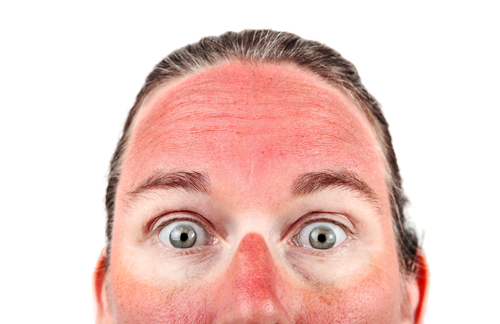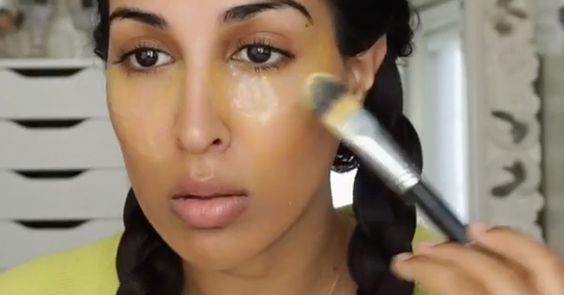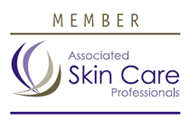5 Pillars of Skin Health
The 5 Pillars of Skin Health
Healthy skin is protecting our body, physically, biologically and chemically, acting as a Barrier. It is relatively thin, nevertheless very strong. Not everyone knows that skin is also our largest organ and a gland. Like er organs, it has complicated architecture and support system. Unlike other organs, our skin is visible to others. When any part gets compromised changes occur as the skin tries to compensate for the loss. Healthy skin always looks beautiful.
HERITAGE:
Are there differences in skin structure and functions depending on ethnic skin types? Obviously, yes. It is part of evolutionary adapta.jpg) tion mechanism. The most obvious ethnic skin difference relates to skin color due to the production of melanin, our natural sunscreen. Both the light and dark skin has melanin, though two different kinds: Pheomelanin (red to yellow) and Eumelanin (dark brown to black).
tion mechanism. The most obvious ethnic skin difference relates to skin color due to the production of melanin, our natural sunscreen. Both the light and dark skin has melanin, though two different kinds: Pheomelanin (red to yellow) and Eumelanin (dark brown to black).
Upon chemical or mechanical challenge, the barrier function is reported to be stronger in darker skin despite lowest lipid levels. Asian skin is reported to have the weakest barrier function upon mechanical challenge, thinner top layer and higher sweat gland density. Reduced natural moisture levels in darker skin contributes to “ashing” effect. Dark skin has decreased skin surface pH and larger immune cell granules compared to light skin. Knowing our ethnic heritage can help us to pay more respect to our skin’s essential needs and stay well protected.
ENVIRONMENT:
Sun exposure is recently claimed the most significant environmental stressor. Air pollution, both indoor and outdoor, is claiming its toll since most population now resides in cities. Electromagnetic pollution is flooding our bodies as well.
Air humidifiers, purifiers, conditioners with HEPA filters and ionizers, potted flowers and regular surface wiping are in our arsenal to offset the damage. Unplugging electronic devices at the end of the day, walking barefoot on grass, banning TV, comps and cellphones from our bedrooms gives our cells time to realign for proper regeneration. Sunscreens are part of daily skincare routine. Covering exposed skin with clothes, wearing sunglasses with UVA/UVB filters and a wide-brimmed hat is even better. Also, the proximity to a large body of water (lake, river, ocean) creates favorable environment for our skin, helping it to stay moist and look young longer.
LIFESTYLE:
Th e way we organize our life is also affecting the skin health. Some of us are physically exhausted at work: squatting, lifting, bending, climbing stairs, etc. Hint: when the body is tired, the blood circulation is kept closer to the vital organs (heart, liver, brain). The skin receives only minimum support. The challenge is to find 20 minutes to lie down, relax all muscles and have a catnap twice during workday.
e way we organize our life is also affecting the skin health. Some of us are physically exhausted at work: squatting, lifting, bending, climbing stairs, etc. Hint: when the body is tired, the blood circulation is kept closer to the vital organs (heart, liver, brain). The skin receives only minimum support. The challenge is to find 20 minutes to lie down, relax all muscles and have a catnap twice during workday.
The other extreme is when larger part of our day is spent indoors, standing or sitting. The blood and lymph circulation gets sluggish and the main support system of the skin becomes depleted. We feel tired, yawn, rub the eyes and reach for a snack. The result is a temporary fix with long-tern consequences.
Physical activity is not supposed to be exhausting to revamp the cell functions. It has to be regular! 3 minutes away from the desk every hour, lifting arms, twisting torso, stretching legs, breathing deeply is enough. If possible, walk around for 2 minutes.
In either case, an 8-hour day will accumulate 40 minutes of “charging” your inner battery, keeping stress level down. A stroll in the park or playing computer games with your kids is a bonus!
CULTURE:
Our skin condition perception depends on our cultural practices. How we expect to look at certain age is influenced also by our social environment. In a multicultural  surrounding we tend to be less critical to ourselves than in a more homogenous group. The use of color cosmetics and fashion is our way of self-expression, mostly within socially accepted limits and our comfort.
surrounding we tend to be less critical to ourselves than in a more homogenous group. The use of color cosmetics and fashion is our way of self-expression, mostly within socially accepted limits and our comfort.
Our upbringing, also subconsciously, impacts our skincare choices. What is common sense to an Eastern European, can be mind boggling to a Middle Easterner or an Inuit. Modern city life is a cultural melting pot, but every “metal” melts at its own peak temperature, creating unique “alloys” and influencing each other.
DAILY CARE:
Our daily skincare routine tends to be as minimal as possible. Not many of us have time or willpower to follow 5-step protocol twice a day! S till, what was acceptable at the age of 5, is not appropriate at 45.
till, what was acceptable at the age of 5, is not appropriate at 45.
The non-problematic skincare after puberty must include at least 2 steps – 1)wash off dirt and 2)protect the clean skin. The choice of brands, types of products, intensity, effectiveness, texture and other aspects can always be discussed with your skincare therapist during your initial consultation, and adjusted at the scheduled treatment session.
It's time to get the support you need to at every phase, stage and pillar of your skin health.
As a trained medical professional and educator, my mission is to support the foundation of your youthful complexion.Call today for your complimentary consultation or to book your first appointment! (484) 888-0778
To your beautiful skin!
Helen




